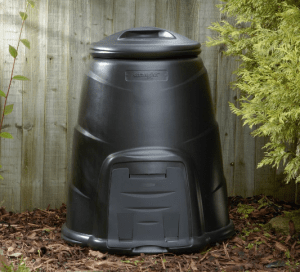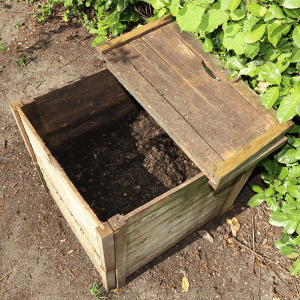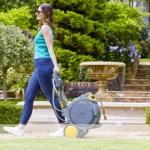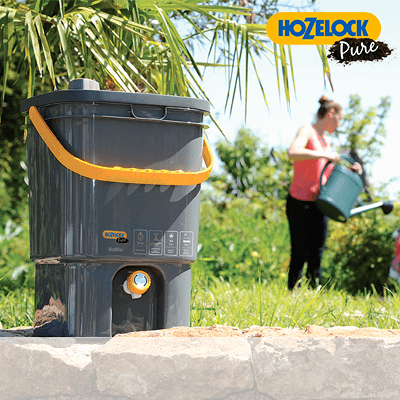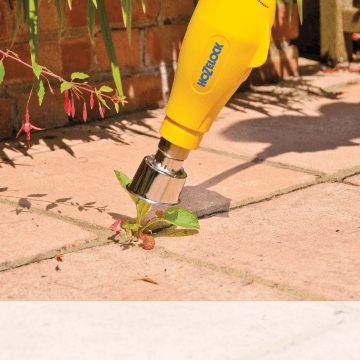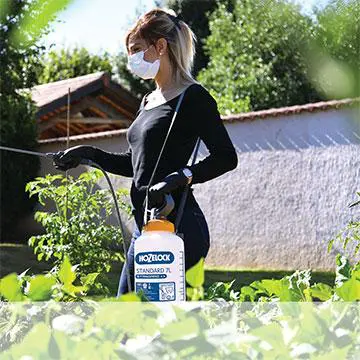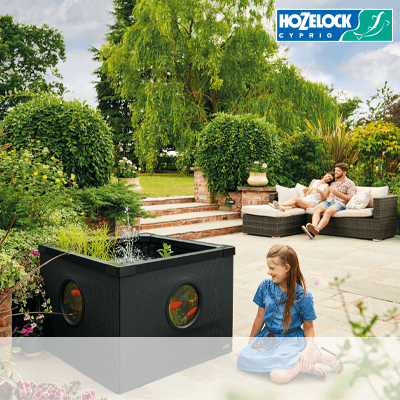Hozelock's Guide to Composting
Learn how to compost using Hozelock's easy guide to composting.
Reasons to Compost
Be environmentally responsible by limiting domestic waste going to landfill
Composting reduces the volume of waste in our dustbins by 30%. Also, landfills give off methane, which traps heat in the atmosphere, causing global temperatures to rise.
Produce a 100% natural soil improver and fertiliser to enrich your soil
Improve the structure of your soil by mixing in homemade compost. It will lighten and break up heavy soils and bulk up light sandy soils. Therefore, it helps to hold more water and is a sustainable, slow-release, plant nutrient.
Reduce the level of pollution released into the atmosphere
Composting your garden waste reduces the need for polluting bonfires. By producing at home you reduce the amount of plastic required to package compost, soil improver and fertiliser. Therefore, cutting down the levels of waste disposal as well as transportation.

Avoiding the use of peat within compost to reduce emissions
Most commercial compost uses peat. In the UK, more than 24 million wheelbarrows of peat are used every year and degraded peatlands are responsible for 5% of our CO2 emissions. Homemade compost is peat-free and sustainable.
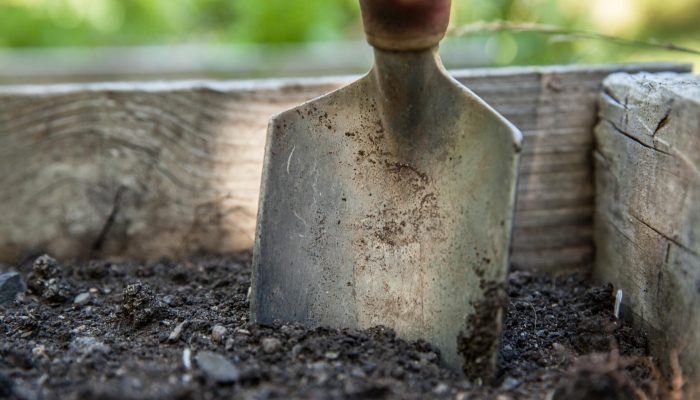
Save money on compost, soil improver and mulch
Purchasing compost, soil improver and mulch can be a costly expense depending on your garden size. Therefore, composting can save you money over time, as well as being a great benefit to the garden.
What is Composting?
Composting is the conversion of organic waste in the presence of air.
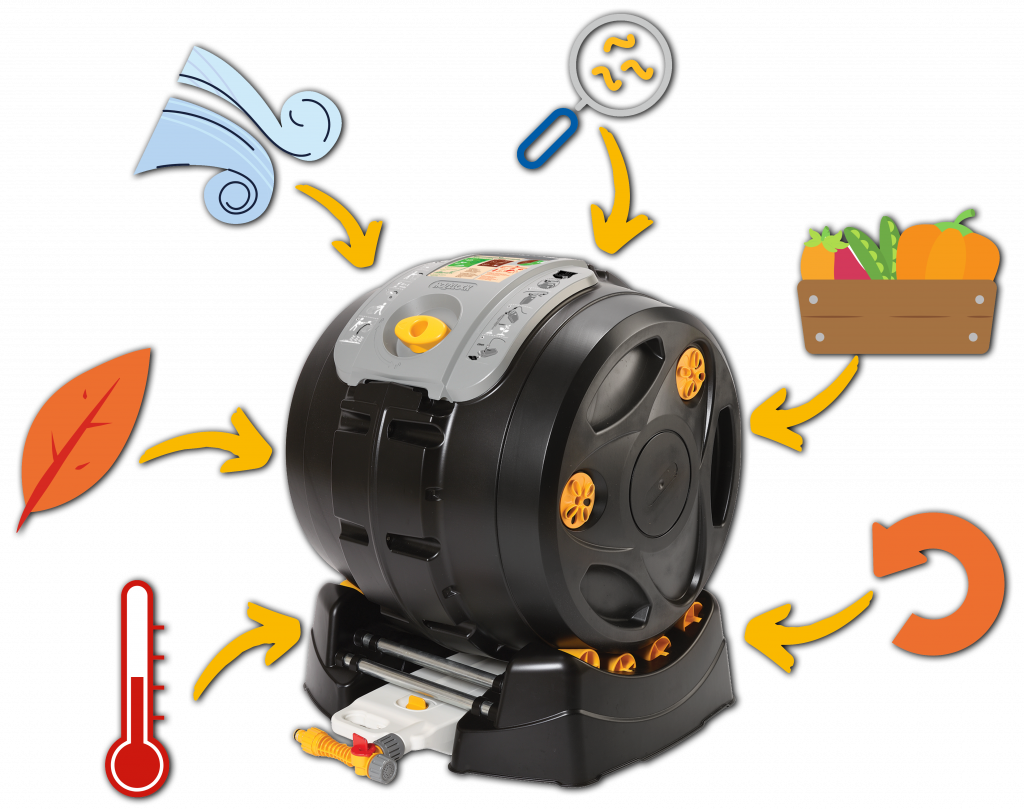
What to add to my compost?
Composting Golden Rules
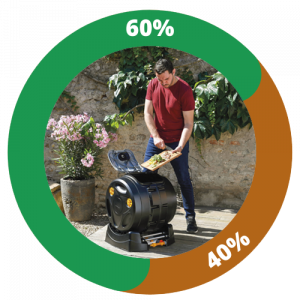

Maintain humidity
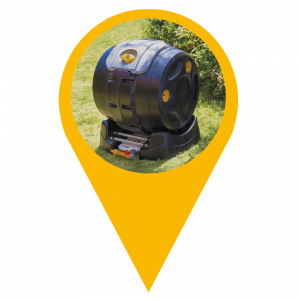
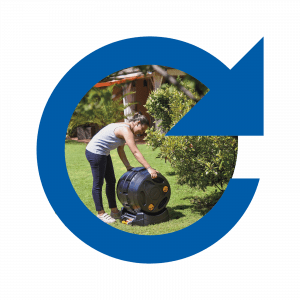
Aerate and mix your waste
The input of oxygen accelerates the process, turning it over once or twice a week is ideal and also limits bad smells. Most importantly, chop the contents up small as possible.
Composting Solutions
Keep in small/medium gardens. Aerobic fermentation (air) using micro-organisms.
Keep indoors for kitchen waste. Anaerobic fermentation (no air) using specific micro-organisms.
What to do with your compost?
Use “young” compost (half decomposed) for mulching
Cover the soil with a layer of “young” compost roughly 3 to 5 cm deep as a mulch this will protect the earth against sunlight, rain and wind and will regulate temperature. It maintains humidity and limits the formation of weeds to gradually release nutrients into the soil.
Use “ripe” compost (totally decomposed) as soil improver
Ripe compost will have an undergrowth smell and be dark in colour with a lumpy structure. Incorporate the ripe compost into the surface of the soil down to a depth of between 5 and 10 cm. Mix 1/3 of the ripe compost with ordinary soil, it will be easier to work and more fertile.
How long should I leave the compost to rest and mature when it is 75% full?
6 to 8 weeks, to ensure proper maturation of the compost. Ideally, you should buy 2 composters for continuous composting (one composter being used and one composter maturing).
Composting Seasonal Tips and Advice
Spring is the best period for starting to compost.
As temperatures are rising and micro-organism activity is on the increase. After the slow down in decomposition of the compost in the winter, remember to regularly mix the contents of the composter to aerate it and restart fermentation. However, be careful not to overload the composter, in this season the garden renders a great deal of green waste. Remember to keep the surplus waste in a heap next to the composter for use later on.
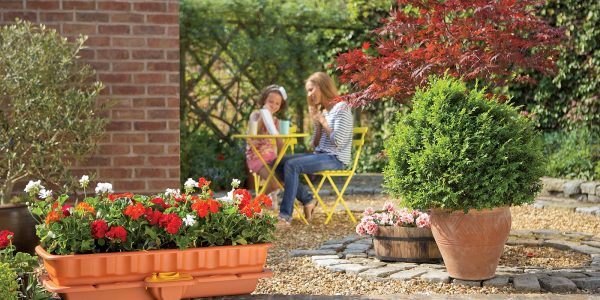
Keep an eye on your compost mixture.
Make sure the compost does not dry out too much in the heat, and spray with water if necessary. If your compost is too dry, try keeping it in a cooler location in your garden, rather than in direct heat.
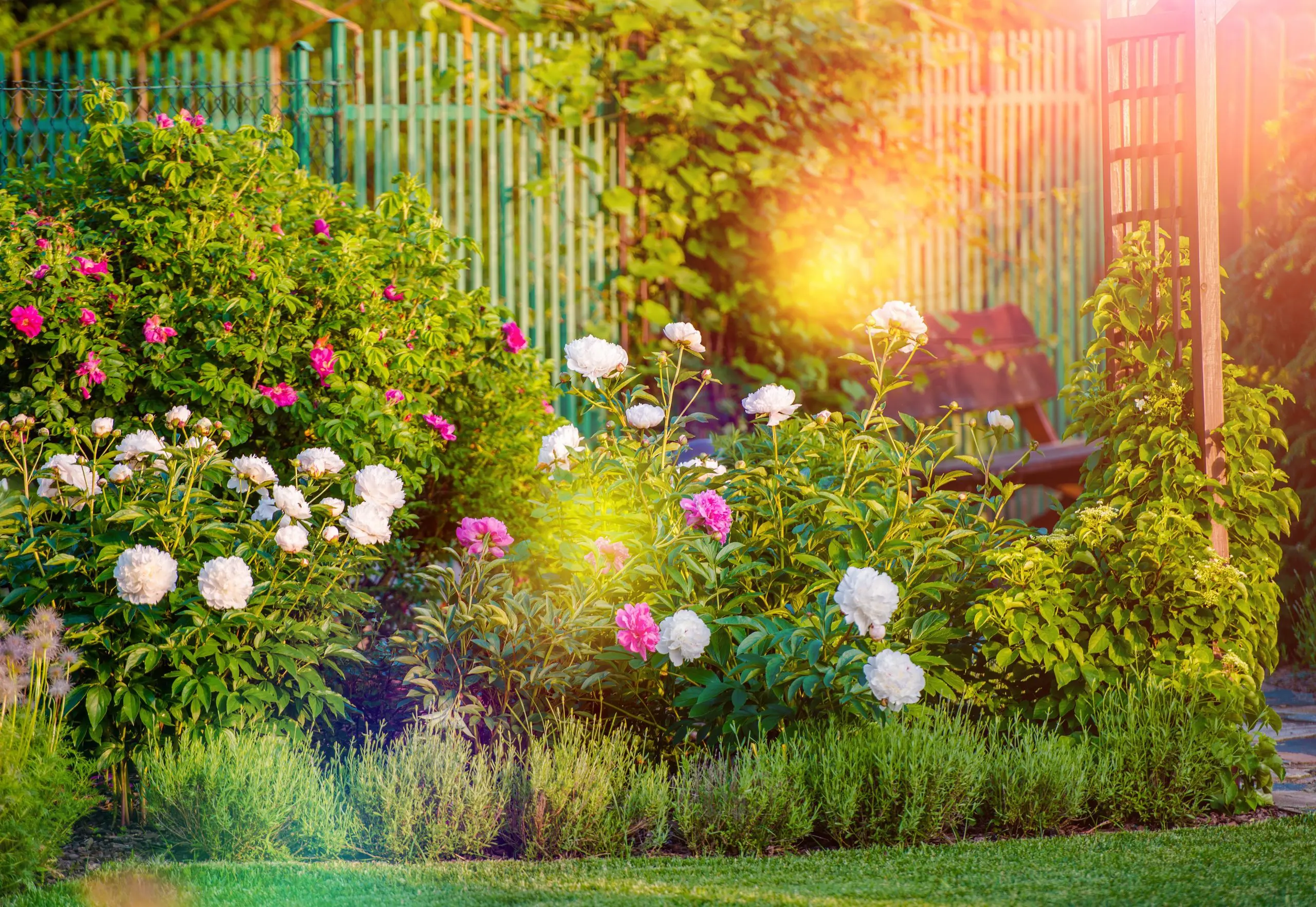
Store your dried leaves
As in the spring, keep a heap of dead leaves at the back of the garden for later. This will not only limit the amount of leaves placed in your composter over Autumn, but will certainly be beneficial come spring and summer.
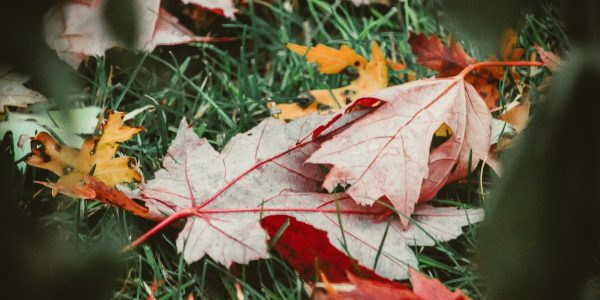
Expect your compost to slow down.
The drop in temperature reduces micro-organism activity, so the composting process will slow down considerably. This is to be expected, especially in the colder Winter months. However, as soon as the weather picks up again in Spring, so will your compost mixture.
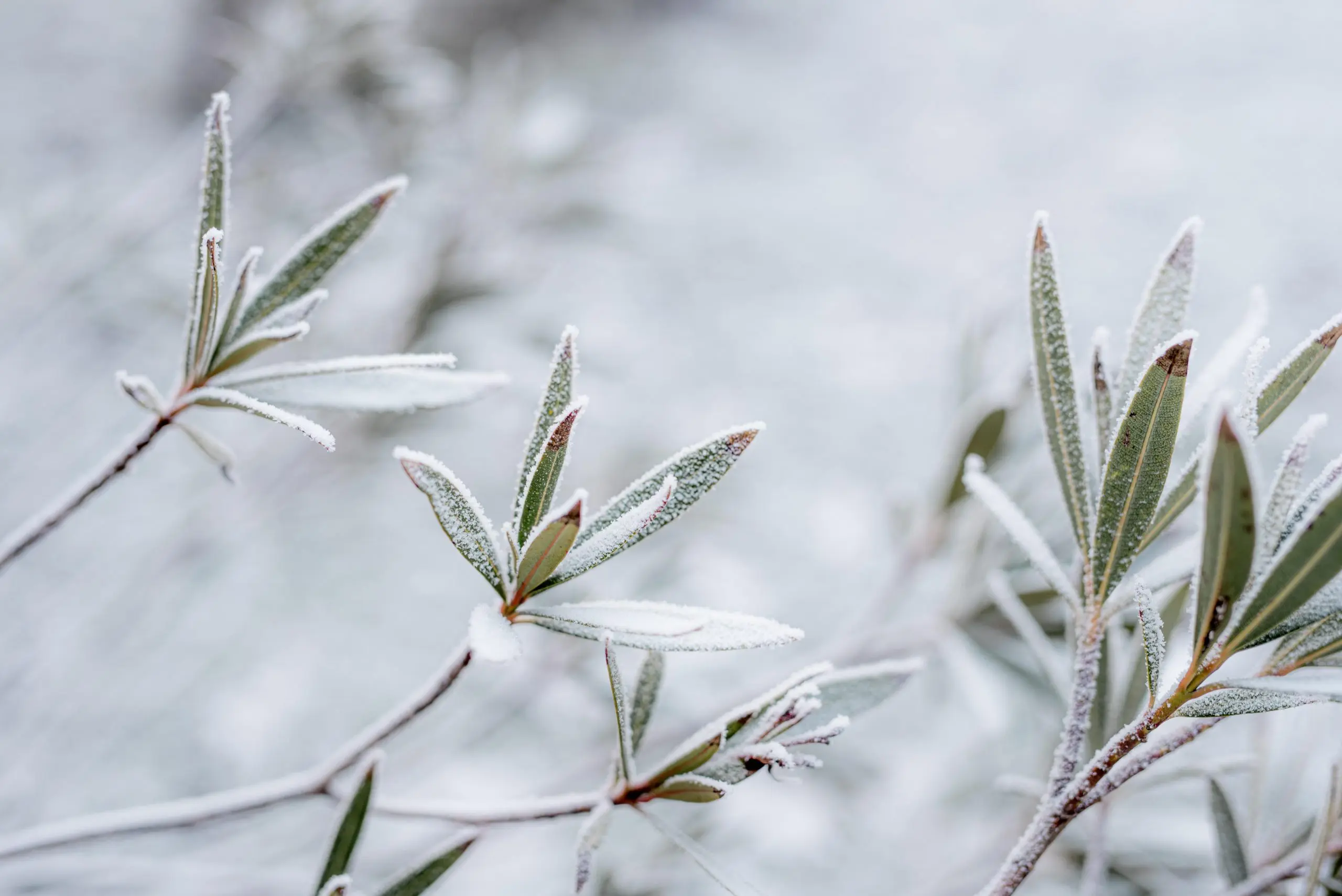
Using your compost

Trees
Spread the compost around your tree roots, this will supply nutrients that help protect the tree from diseases. Put roughly a 5-10cm layer of compost, but try to avoid spreading on the tree trunk, as the roots will absorb the key nutrients.
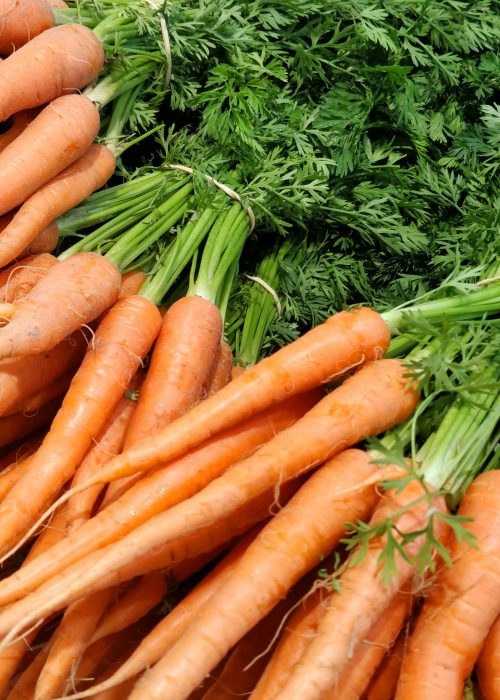
Herbs and vegetables
Adding compost to your fruit, veg and herbs is one of the best things you can do. Simply add your mixture to your plants with each rotation. If you are preparing your soil for spring, add a large layer of compost to your garden bed in the winter months. It will be fully decomposed and ready by spring.
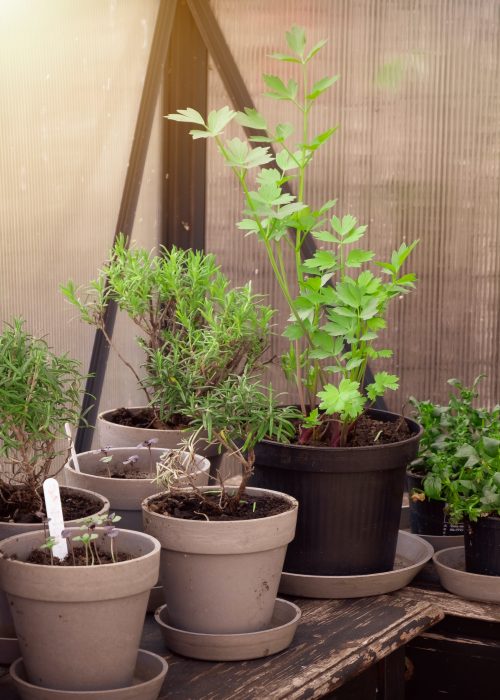
Plant Pots
Your compost can be used for outdoor and indoor plants. Remove the top level soil and add a few centimetres of compost to your pot. Start by adding smaller amounts and tracking the health of your plant. You can always add more further down the line.
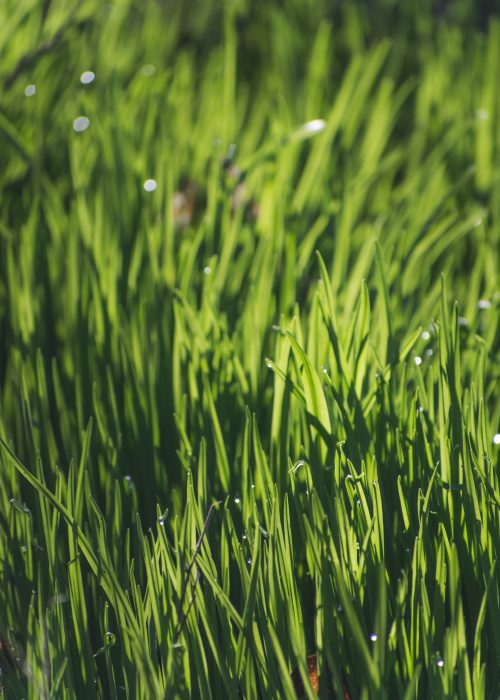
Lawns
Create a mix using compost, sharp sand and soil. Start by spiking your lawn thoroughly, then apply a very thin layer of your mixture. Spread using a rake, ensuring you can still see the grass. Mature lawns will benefit greatly from this, however, younger lawn can be scorched easily, adjust your mixture accordingly using more compost for older lawns.
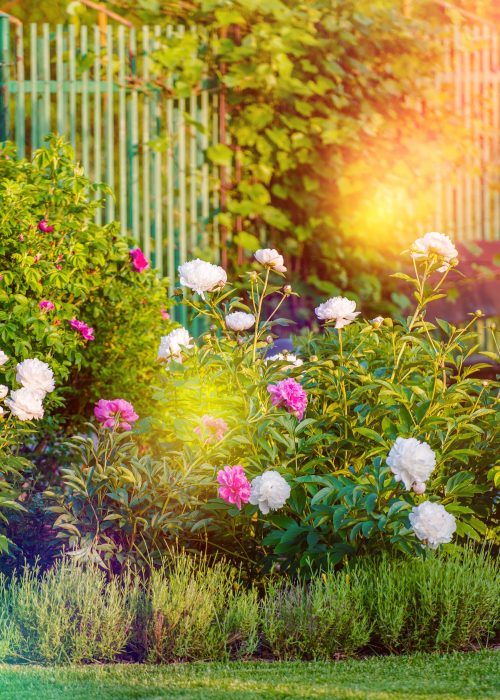
Flowerbeds
Spread a 10cm layer of compost into the soil before planting flowers. If you are adding to a flowerbed, thinly spread your compost around the base of the plants. Be cautious of adding too much, a little goes a long way.
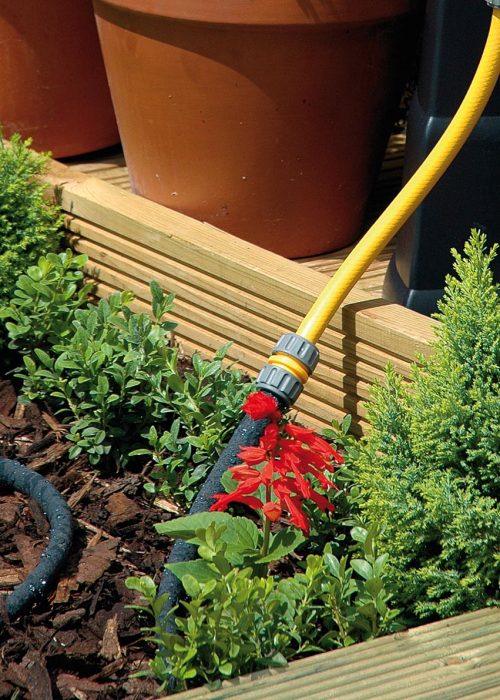
Borders
Firstly, rake out any fallen leaves and debris and remove any weeds. Hoe the top layer of soil, then spread a 5cm layer of compost on top. Make sure to leave spaces around any new plants allowing them to acclimatise to the surrounding soil first.
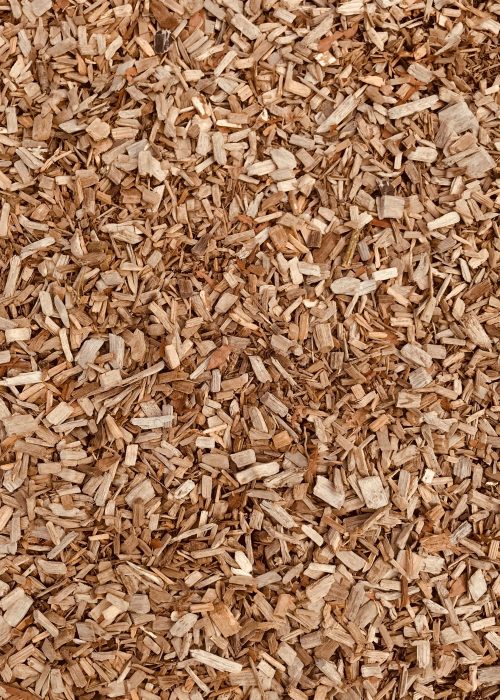
Mulch
Adding your compost mixture to woodchips or bark will help improve drainage, making it more moisture retentive. This is a great way to maintain to your garden throughout the year. Adding mulch after it has rained will help keep the moisture in the soil.
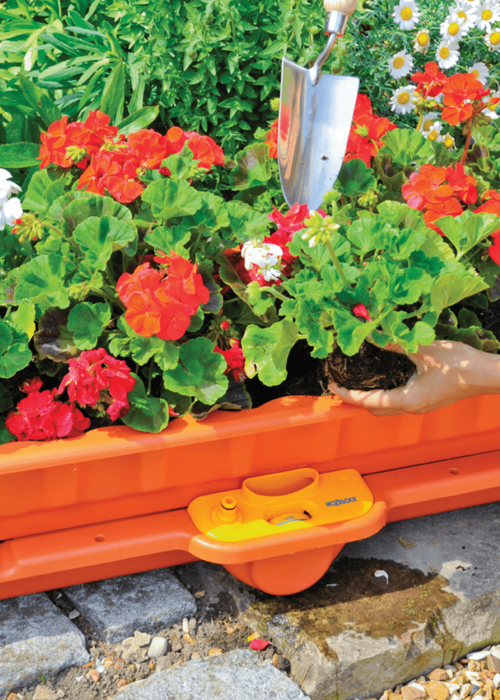
Planters
If you are using a planter, simply crumble your compost around the base of the plants. This will improve the growth and health of your flowers. Especially when using the Hozelock Flower and Vegetable Waterer, your flowers will benefit from nutrients and a constant water supply.
Using your compost juice
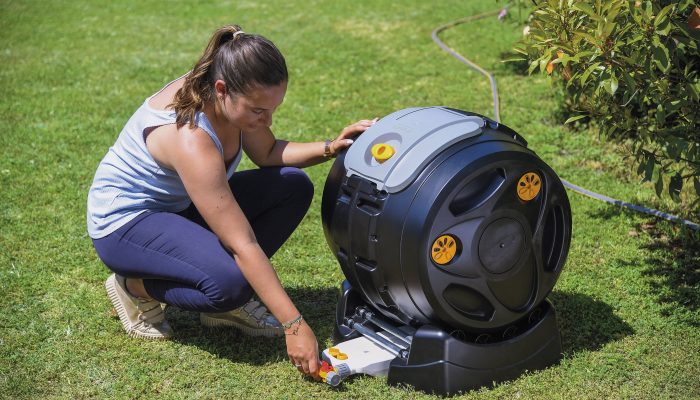
Using a liquid feed
Similar to compost, a liquid feed can be used in various areas within your garden. The benefit to a liquid feed is that it can cover large areas with ease, especially when used alongside your Hozelock watering system. Spraying your liquid feed makes it easier for any hard to reach areas in your garden.
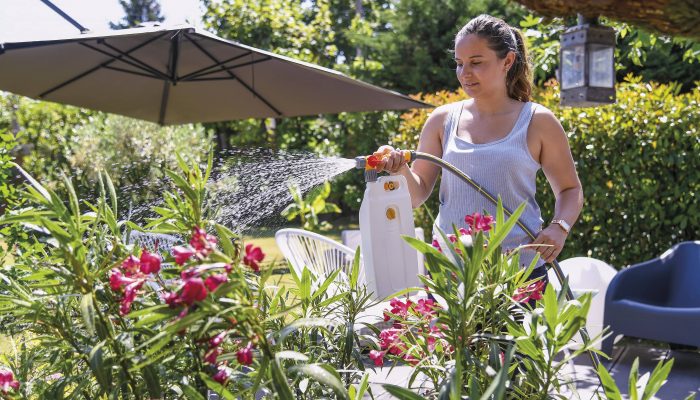
Dilution
Because of its concentration, it is important to dilute the compost juice properly before using it. The dilution of the compost juice from your EasyMix composter should be done at about 2%. In other words, for 1 litre of compost juice you need to use 50 litres of water. The 2% dilution is carried out directly via the integrated “Click&Spray” watering system.
Composting FAQ
COMPOSTER FAQ
Compost heaps should only attract the odd animal looking for scraps. If this is a regular occurrence, it’s possible fish, animal fats and food cooked in vegetable fats have been added to the pile. Therefore, anything that you may think may attract a rodent, you should consider removing from your composting process.
For more long term solutions, consider moving your compost into a more secure area or ensure you have a bin with a locking lid. You could use wire mesh for keeping out rodents, but this is not the most attractive method.
Consider using an EasyMix which has been specially designed to deter any rodents or pests.
Don’t worry! This is to be expected, simply sift out any larger parts within your compost that haven’t yet decomposed and return to the compost bin. Mix with your garden soil for a nutritious blend. Even though it may not look pretty, it will certainly do the job.
- Try spreading some coffee grounds at the bottom of your compost heap, this will assist in getting worms to your compost.
- Add your compost and other organic material, such as manure, to your garden. Worms will be on the search for this material and attract them to the vicinity.
If you are aiming to deter worms from your compost consider using an EasyMix. This has been specially designed to deter any worms or pests by using aerobic fermentation.
Due to the freezing temperatures in winter, the composting process may slow down, however, continue to add to your compost as the temperatures rise in spring. This will break down everything you added during the winter period.
Try altering the way you compost:
- Is your pile too dry? Add some moisture every so often.
- Is your pile too wet? Add some brown materials such a leaves, hay or shredded cardboard.
- Is your pile too small? The more you add to the compost, the better the results.
- Too little air? Look at altering the air intake for your compost, keep track of its effectiveness. If you are using an EasyMix composter, alter the 4 air vents to activate further aerobic decomposition.
- Mix your compost. If you are using an EasyMix , simply rotate the drum once or twice a week.
It can be difficult to know when your compost is ready to use, especially when you are adding to it regularly. However, alternating between 2 composters will help with this. Look for the indications bellow to determine whether your compost is ready to use:
- Dark
- Crumbly
- Broken down
- Earthy soil-like smell
- No distinct foul smells
Choose a location that will be both in and out of the shade, out of the hot summer sun if possible. This location needs to be accessible by those using it, yet in an area where possible smells won’t be a concern. Avoid placing where new trees, plant and roots could be present.
This advice can be put into use for almost all composting methods. For inside composting such as the Biomix, the location is not as important.
Gloves provide a barrier between your hands and the compost.
However, the only real reason you will need gloves would be if manure is used within the composting process.
High-carbon materials consist of brown or woody materials such as autumn leaves, wood chips, sawdust, and shredded paper. Having too many high-carbon materials can be a problem, especially in autumn. If you have too many high-carbon materials, try storing them away before adding to your compost. In order to help balance out your compost, add in more “greens” (Vegetable and fruit waste, grass mowings, coffee grounds, hedge trimmings etc.) You can use your stored away brown in the summer, when these are more difficult to come by.
Fertilising your compost is not an essential step, yet it can help:
- Bring nutrition to your compost
- Add key nutrients
- Compliment your compost mix
- Assist in the fast release of nutrients
No. Sowing, potting and multipurpose compost will be different from your home grown. Compost purchased from shops may include shredded bark, sand, coir and fertilisers. You will know what your compost contains, and more often that not will be a more sustainable method of composting, as well as being incredibly healthy for your garden.
EASYMIX COMPOSTER FAQ
No, ideally you need to mix it with earth
- For mulching: spread a layer 3 to 5 cm deep
- For planting: mix 1/3 compost and 2/3 earth
- For upkeep of your garden: dig the compost into the soil 5-10 cm deep
You can get 40 to 50 kg of compost with a 75% full EasyMix composter.
Vegetable garden = 7 to 4 kg per sq m
Flowerbed = 1 to 3 kg per sq m
Lawn = 2 kg per sq m
- 2% = 1 litre of liquid plant food for 50 litres of water (automatically dosed with the Click & Spray adaptor)
- It takes 2 to 3 months to fill up the tank
- You can keep the composter in the garden, or on a terrace or balcony or in a garage, as the compost is not in direct contact with the ground
- It can be kept somewhere easier to access than with a conventional composter, due to it’s specially designed base.
- Once or twice a week, and whenever you add waste to it
- In the winter the temperatures fall, so the activity of the micro-organisms also decreases.
- You can continue to add waste to your composter, but remember to add brown matter, not just peelings.
- Only rotate your compost during warmer temperatures, in Winter you should limit any movement to the compost.
- The product’s materials withstand extreme temperatures and frost
- It is guaranteed for 3 years*
* in normal conditions of use (see our After-Sales charter)
- It has been designed in such a way that the rainwater falling on the drum is not collected in the tank under the drum
- The composter is made with 90% of recycled and 100% recyclable material, hence its dark colour (several plastics of different colours are blended)
- Black retains the heat and encourages decomposition thanks to a quicker rise in temperature
- The 4 air vents around the tank help the oxygen circulate evenly inside, to activate aerobic decomposition (which requires air) by means of the micro-organisms
- 28 cm, wide enough to add waste and to insert a spade to retrieve the compost
Symptoms and Remedies
| Symptoms | Causes | Remedies |
|---|---|---|
| Ammonia smell | - The mixture contains too much nitrogenous matter - Temperature too high (over 70°) | - Add carbonaceous (ground-up) matter - Some of the mown grass should be taken to the waste collection centre or swathed at the bottom of the garden - Mix |
| Rotten egg smell | - Lack of oxygen - Too much humidity | Mix, spread and leave to dry in good weather, where necessary add dry materials in the same state of decomposition as the mature compost, or dry earth |
| The compost is dry | Lack of water | - Mix up the whole heap - Leave to dry - Add dry matter |
| The compost is pasty | - Lack of oxygen - Too much humidity | - Mix up the whole heap - Leave to dry - Add dry matter |
| The compost remains cold or is only warm in the centre | - Lack of oxygen - Too much humidity - Lack of water - Lack of nitrogen - Too little volume - Too porous, the air circulates too easily | - Mix and turn over to aerate - Leave to air-dry or add dry materials - Mix and water or add wet matter - Mix, and if humidity permits, incorporate green matter - Plan to store the matter and prepare a new larger mixture - Add small fractions or remove large fragments, humidify |
| Presence of "small flies“ (common fruit fly, drosophilas) | Meal leftovers or rotten fruit on the surface of the compost | Cover with ground-up matter, mown grass, leaves, or sprinkle with stone meal or ash, ensuring a draught (leave 10 cm of pace up to the cover) |
| Presence of "large flies“ (dung scats) | Leftover meat or fish (or excrement) | Don't use such matter from now on, which is not recommended |
| Presence of "white filaments" in the compost (fungi) | The compost contains too much "brown", hard and very dry matter (leaves, twigs, etc.) | - Add moist green matter (turf, peelings, etc.) - Humidify |
| Weeds grow when the compost is used | Temperature too low | Don't add plants running to seed or sick plants until you master the composting technique |


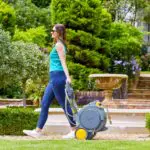

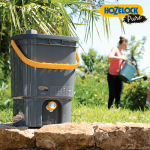
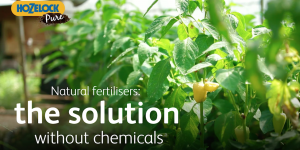
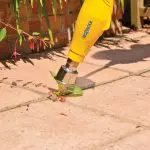
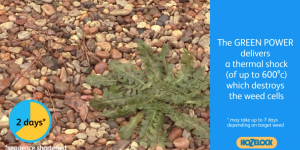
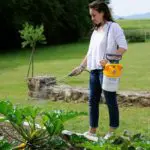
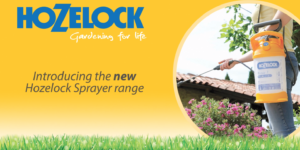


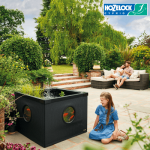
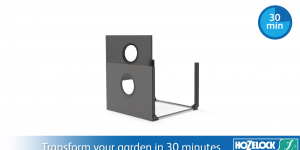
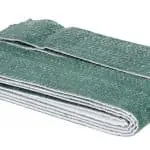
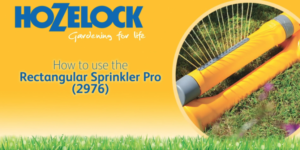








 For best effect, use with 2 composters: compost in preparation and compost in maturation.
For best effect, use with 2 composters: compost in preparation and compost in maturation.